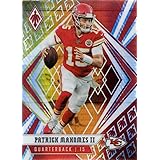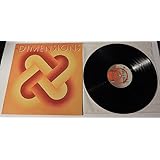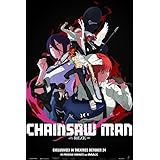It is a common scenario: the excitement of a wedding invitation quickly gives way to a pressing question, often whispered with a hint of dread – “What should be worn?” The visual inspiration provided in the accompanying “Get Ready With Me” video offers a fantastic starting point, showcasing a cohesive wedding outfit idea. However, the intricacies of wedding guest attire extend far beyond a single ensemble; a nuanced understanding of various dress codes, seasonal considerations, and sartorial etiquette is often required to navigate these joyous occasions with confidence and style.
The journey to selecting the perfect wedding guest outfit can feel akin to deciphering a complex code, where the ideal balance of elegance, comfort, and appropriateness is sought. This extensive guide is designed to complement the visual demonstration, delving deeper into the principles that underpin impeccable wedding fashion. From formal galas to casual beach ceremonies, the considerations for one’s appearance are paramount, ensuring respect for the couple and enjoyment of the celebration.
Decoding the Wedding Dress Code: Mastering Wedding Guest Attire
Understanding the specified dress code is the foundational element of selecting appropriate wedding guest attire. This critical detail, typically found on the invitation, serves as the primary indicator for the expected level of formality. Adherence to these guidelines is not merely a suggestion but a mark of respect for the hosts’ vision for their special day, ensuring a cohesive aesthetic is maintained throughout the event.
Black Tie & Black Tie Optional: Pinnacle of Formal Wear
For events designated as “Black Tie,” a strict interpretation of formal wear is expected. Gentlemen are typically required to wear a tuxedo, complete with a white dress shirt, a black bow tie, cummerbund, and patent leather dress shoes. Ladies are expected to don a formal floor-length gown, with luxurious fabrics and sophisticated silhouettes often being chosen. “Black Tie Optional,” while offering slightly more leeway, still leans heavily towards elevated formality; a dark suit and tie for men or a chic cocktail dress or elegant pantsuit for women can be considered, though a long gown remains a distinguished choice.
Formal & Semi-Formal Attire: Elegant Versatility for Wedding Guests
The “Formal” designation generally suggests a level of dress just below black tie, where men might opt for a dark suit and tie, and women could select a sophisticated cocktail dress, an elegant midi dress, or a refined pant suit. For “Semi-Formal” weddings, the options expand somewhat, allowing for more personality while still maintaining a polished aesthetic. A dress shirt with dress pants and a jacket (tie optional) is often suitable for men, while women might choose a chic knee-length or midi dress, a tailored jumpsuit, or smart separates crafted from quality fabrics. Consideration of the time of day is crucial here; evening semi-formal often calls for slightly dressier interpretations.
Cocktail Attire: Sophistication and Celebratory Flair
Cocktail attire is frequently requested, striking a delightful balance between formal and casual. This dress code permits a playful yet refined approach to your wedding outfit idea. Women are encouraged to wear a party-appropriate dress that falls above or just below the knee, often adorned with tasteful embellishments or crafted from luxurious materials. Elegant jumpsuits or dressy separates are also highly appropriate. For men, a suit is generally recommended, though a sport coat with dress trousers and a tie can also be perfectly acceptable, depending on the venue and the overall tone of the event.
Casual & Destination Weddings: Comfort Meets Style
When “Casual” attire is indicated, it typically signifies a more relaxed atmosphere, often found at outdoor or daytime events. However, “casual” for a wedding is distinct from everyday casual; jeans, t-shirts, and sneakers are almost universally inappropriate. Women might choose a stylish sundress, a maxi dress, or an elegant skirt and blouse combination. Men can opt for dress pants or chinos paired with a button-down shirt, often without a tie, and perhaps a sport coat. Destination weddings, especially those held on beaches or in exotic locales, frequently call for lighter fabrics and more relaxed silhouettes, but guests should still aim for a polished appearance suitable for a celebratory occasion.
Theme-Specific Dress Codes: Embracing the Narrative
Occasionally, couples opt for a theme-specific dress code, inviting guests to participate in the unique narrative of their day. This could range from “Roaring Twenties” to “Bohemian Chic” or “Garden Party.” When such a theme is presented, a diligent effort should be made to interpret and adhere to it while retaining personal style. Researching the specific era or aesthetic can be invaluable, ensuring one’s attire contributes positively to the overall ambiance, making the wedding outfit idea truly unique.
Seasonal and Venue Considerations for Wedding Guest Outfits
Beyond the formal dress code, the time of year and the location of the wedding significantly influence appropriate attire choices. These environmental factors dictate fabric selection, color palettes, and even footwear, all of which contribute to comfort and cohesion in your wedding guest attire.
Spring/Summer Weddings: Light Fabrics and Vibrant Hues
For weddings held in the warmer months, lightweight and breathable fabrics are highly recommended. Linen, cotton, chiffon, and silk crepes are ideal for dresses, suits, and separates, preventing discomfort in rising temperatures. Color palettes often lean towards lighter, brighter tones—pastels, vibrant florals, and soft neutrals are frequently chosen. For outdoor events, consideration should be given to sun protection, perhaps with a chic hat or stylish sunglasses, always ensuring they do not detract from the formal nature of the occasion.
Autumn/Winter Weddings: Richer Fabrics and Deeper Tones
Colder seasons invite the use of more substantial fabrics such as velvet, brocade, heavier silks, and wool blends. These materials offer warmth and convey a sense of seasonal luxury. Color schemes typically shift to deeper, richer jewel tones—emerald green, sapphire blue, burgundy, and sophisticated metallics are often seen. Layering becomes a practical yet stylish option, with elegant wraps, boleros, or tailored coats completing the ensemble, ensuring one’s wedding outfit idea remains both chic and comfortable.
Indoor vs. Outdoor Venues: Practicality and Style for Your Wedding Outfit Idea
The specific venue type also plays a pivotal role in attire selection. A grand ballroom wedding might call for highly formal, structured garments, whereas a garden party demands something more fluid and perhaps with less restrictive footwear. Outdoor events, especially those on grass or uneven terrain, necessitate a careful approach to shoe choice; stilettos might sink, making wedges, block heels, or elegant flats a more pragmatic and comfortable option. For religious ceremonies, modest shoulder and knee coverings are often considered respectful, regardless of the overarching dress code, which can be achieved with a stylish scarf or jacket.
The Art of Accessorizing Your Wedding Attire
Accessories are the elements that elevate a simple wedding outfit idea into a truly memorable ensemble, allowing for personal expression while adhering to the event’s formality. Thoughtful selection of jewelry, handbags, and footwear can complete a look, adding polish and sophistication.
Statement Jewelry vs. Subtle Elegance: Crafting the Wedding Guest Look
The choice between statement jewelry and more understated pieces depends largely on the outfit itself and the desired aesthetic. If the dress or suit is intricate or heavily embellished, subtle jewelry—such as delicate earrings or a classic watch—often provides the perfect counterpoint. Conversely, a minimalist gown can be dramatically transformed by a bold necklace, striking earrings, or an intricate bracelet. The goal is always to enhance, not overshadow, the overall wedding guest attire.
Clutches, Handbags, and Practicality: Essential Wedding Accessories
A small, elegant clutch or a petite shoulder bag is the quintessential accessory for a wedding guest. These items are designed to hold essentials such as a phone, lipstick, and a small wallet, without being cumbersome. The material and design of the bag should complement the formality and color scheme of the outfit; metallic finishes, embellished designs, or luxurious leathers are frequently chosen. Practicality should not be overlooked; the bag should be easy to carry and manage throughout the event, from the ceremony to the dance floor.
Footwear: Where Style Meets Comfort for Wedding Guests
Footwear is arguably one of the most critical accessory choices for any wedding outfit idea, especially given the amount of standing and dancing often involved. Elegant heels, sophisticated flats, or dressy sandals are all viable options, provided they align with the dress code and venue. As previously noted, outdoor weddings may require more practical choices like wedges or block heels to navigate uneven surfaces with ease. The color and material of the shoes should either match or harmoniously contrast with the rest of the ensemble, ensuring a cohesive and polished appearance. Comfort should never be entirely sacrificed for style, as discomfort can detract from the overall enjoyment of the celebration.
Outerwear as a Style Element: Completing the Wedding Ensemble
For cooler climates or evening events, appropriate outerwear is not just a practical necessity but also an integral part of the wedding guest’s style. An elegant wrap, a tailored blazer, a chic bolero, or a sophisticated coat can complete an outfit, providing warmth without sacrificing glamour. The chosen outerwear should seamlessly integrate with the rest of the wedding outfit idea, both in terms of color and formality, adding an additional layer of refinement to the overall presentation.
Navigating Wedding Fashion Faux Pas
While the focus is often on what to wear, understanding what to avoid is equally important in curating the perfect wedding guest outfit. Certain choices, while perhaps stylish in other contexts, can be considered inappropriate or disrespectful at a wedding, leading to unintended social blunders.
The White Dress Dilemma: Colors to Avoid for Wedding Attire
It is an unwritten, yet universally understood, rule of wedding guest attire: white, or any shade that closely resembles it (ivory, cream, champagne), should be avoided by all guests, unless explicitly requested by the couple. This tradition reserves the unique privilege of wearing white for the bride, ensuring her prominence on her special day. Similarly, some suggest avoiding colors that might clash with the bridal party’s attire, though this is a less rigid guideline and often difficult to ascertain beforehand. Black, once considered taboo, is now widely accepted, especially for evening or formal events, often conveying elegance and sophistication.
Overdressing vs. Underdressing: Striking the Right Balance
The perennial dilemma of being overdressed or underdressed is best resolved by a careful reading of the invitation and a consideration of the venue. Generally, it is often better to err slightly on the side of being overdressed rather than underdressed, as it demonstrates respect for the occasion. However, excessively elaborate outfits that compete with the bridal party or draw undue attention away from the couple are typically frowned upon. The objective is to complement the event’s aesthetic and contribute to its celebratory atmosphere, not to become the center of attention.
Comfort vs. Style: Ensuring Enjoyment of the Wedding Guest Attire
While sartorial elegance is paramount, personal comfort should not be entirely sacrificed. An outfit that is too tight, too revealing, or impossible to move in will inevitably detract from the enjoyment of the wedding. Guests should be able to sit, stand, dance, and mingle with ease. Careful consideration of fabric, fit, and footwear, as discussed previously, will ensure that the chosen wedding outfit idea allows for full participation in all aspects of the celebration without discomfort.
Respecting Cultural Nuances: A Global Perspective on Wedding Outfits
For weddings involving diverse cultural traditions, an understanding of specific customs can be crucial. Certain cultures may have specific color preferences or garments that are considered auspicious or respectful. If attending a wedding from a different cultural background, a discreet inquiry about any specific dress code requirements or cultural sensitivities can prevent inadvertent faux pas and demonstrate thoughtfulness and respect for the couple’s heritage. This adds another layer of depth to selecting the ideal wedding guest attire.
Sustainable Choices for Your Wedding Guest Wardrobe
In an era of increased environmental consciousness, many guests are now considering the sustainability of their wedding outfit choices. Embracing more thoughtful consumption habits can be both eco-friendly and economically savvy, without compromising on style or elegance for your wedding guest attire.
Renting vs. Buying: A Modern Approach to Wedding Outfits
For a specific event, especially one requiring a particularly formal or unique garment that may not be frequently re-worn, renting an outfit is an increasingly popular and sustainable option. Services specializing in formal wear offer a wide array of designer dresses, tuxedos, and suits for hire, providing access to high-quality pieces without the long-term commitment or environmental impact of a new purchase. This approach allows for variety in one’s wedding outfit idea for different events.
Re-wearing and Re-styling Existing Pieces: Maximizing Your Wardrobe
Another excellent sustainable practice is to re-wear and re-style existing garments. A classic dress or suit can be given a fresh look with new accessories, a different hairstyle, or a change in makeup. Investing in versatile, high-quality pieces that can be dressed up or down for various occasions makes intelligent use of one’s wardrobe and reduces the demand for new production. This demonstrates how a single wedding outfit idea can be transformed.
Investing in Timeless Quality: Long-Term Wedding Guest Style
When purchasing a new item, opting for timeless designs and high-quality materials can be a sustainable choice in the long run. Well-made garments, though potentially a larger initial investment, tend to last longer and maintain their appeal across seasons and trends. These pieces can become staple items in a formal wardrobe, ready to be deployed for numerous events, making each wedding outfit idea a considered and enduring investment.
Ultimately, the thoughtful selection of a wedding outfit idea is a gesture of respect and celebration for the couple’s special day. By understanding dress codes, considering seasonal and venue specifics, mastering the art of accessorizing, avoiding common fashion missteps, and even embracing sustainable practices, a guest’s presence is enhanced by their impeccable presentation. The preparation ensures one can fully immerse themselves in the joy and festivity of the occasion, creating lasting memories for all involved.











